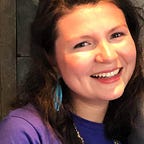Digital Strategy at Katonah Museum of Art
The Katonah Museum of Art (KMA) is a non-collecting visual art museum in Westchester County, New York. I had the pleasure to speak with Caroline Holder, KMA’s Marketing & Communications Manager. Our conversation included a discussion about KMA’s outreach efforts before the Covid-19 pandemic and how the institution adapted to continue to serve its audience.
The mission of KMA is to promote the understanding and enjoyment of the visual arts for diverse audiences. The Museum presents exhibitions that explore ideas about art, culture, and society — past and present — through innovative exhibition and education programs.
The KMA serves all audiences, there are workshops for teachers, education programs, a Young Artists Annual Exhibit, and rotating exhibits that would interest a variety of visitors. The target audience is a slightly older demographic but the Museum attracts visitors from the tri-state area, New York, Connecticut, and New Jersey. Depending on the event, such as the Young Artists Exhibit, visitors may be more localized, compared to other installations.
Engagement Strategy Pre-2020
Prior to 2020 KMA’s approach was reliant on print advertising. This includes ads in local and regional papers as well as other media outlets. Similar to many other institutions, face-to-face and in-person interactions were very important. KMA has a presence on Facebook, Instagram, Twitter, and YouTube, Holder produces almost all of the content for these platforms. There is also a part-time assistant for additional social media production. The exception would be YouTube, the KMA is fortunate to have a videographer and photograph on staff. As a result, the videos posted are of high quality.
Present Strategy
KMA has continued to produce some print materials however it is a smaller percentage than in the past. The Museum’s audience is primarily local but Holder noted that the pandemic has allowed visitors from further afield to take part in virtual events. A goal for the Museum is to attract more young people and a strong social media presence is a helpful tool. Posts on Facebook and Instagram are often cross-posted as these sites have the highest number of followers. Posts on Twitter often need some adjustment due to the character limit. Holder noted that Instagram is the best platform for sharing exhibit photos and engaging with their audience. A challenge that social media poses are that as platforms continue to add features, it is difficult to stay on top of these changes.
During the past year KMA produced virtual and hybrid events, a small number of in-person events have resumed as capacity has increased. The hybrid events have been live-streamed for visitors that could not visit, and virtual activities were included. The virtual events were priced similar to Museum admission, a number of events were also free.
KMA has been utilizing izi.TRAVEL, most recently for the Hands & Earth: Perspectives on Japanese Contemporary Ceramics. Cultural institutions can use izi.TRAVEL to create audio tours, the company describes itself as a storytelling platform. Each object includes a photo with a written and audio description. The tour can also be downloaded with a QR code. This is a perfect opportunity for distant visitors to experience the exhibit and understand the context of the objects. The KMA will be exploring the possibility of more virtual tours of future exhibits. Holder explained that the past year has involved a lot of experimenting. She noted it’s important to see what people find engaging and how you can continue to feature all the things that a museum provides in-person.
Future Plans
During our conversation Holder said that it can be challenging to determine what platforms would best for their audience. There are so many options but limited bandwidth, there is always a risk/reward equation that must be done when a new platform or offering is considered.
The Westchester Tourism organization recently filmed a virtual 360-degree tour for the Museum. The purpose of the tour is to encourage more people to visit Westchester, the plan is to create virtual tours for other attractions in the county.
The Museum will also be developing a new website, part of the impetus is the need to imbed videos for the best viewing experience. Institutions usually need to update their website every five years or so. Visitors will also be able to explore current exhibits as well as prior exhibits in the archives.
Challenges as well as Successes
KMA has continued to generate interest and engagement with its audience throughout the course of the pandemic. People are signing up for memberships as well as donating to the Museum. Holder believes this is advantageous for KMA going into 2021, people are excited to come back to the Museum and experience it in-person. One of the key performance indicators is attendance, both in-person and virtually. Holder has been very proud of those numbers, she believes it speaks more to the job KMA is doing creating engaging content.
A challenge for the KMA is managing visitors’ expectations as the Museum continues to navigate re-opening policies. A focus has been on communicating the new rules around ticket reservations. Since KMA has a small staff there is limited bandwidth to continue to meet the demands of the current environment.
Developing new and exciting exhibits can also be challenging. KMA relies on a mix of recurring annual events but there is also a need for innovative programming. An upcoming exhibit, Arrivals opens in the fall of 2021, the artists have created pieces that speak to their arrival to the US. This might be the perfect exhibit to welcome visitors, especially those who haven’t been able to visit over the past year.
